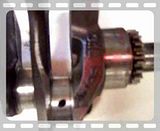Originally posted by ForcedFirebird
View Post
 im gonna do some research on how to actually determine the testing. i just dont want to go out and buy 2 or 3 3500 cranks to find out they are cast, because id like to have a crank to support my hp goals.
im gonna do some research on how to actually determine the testing. i just dont want to go out and buy 2 or 3 3500 cranks to find out they are cast, because id like to have a crank to support my hp goals.




Leave a comment: